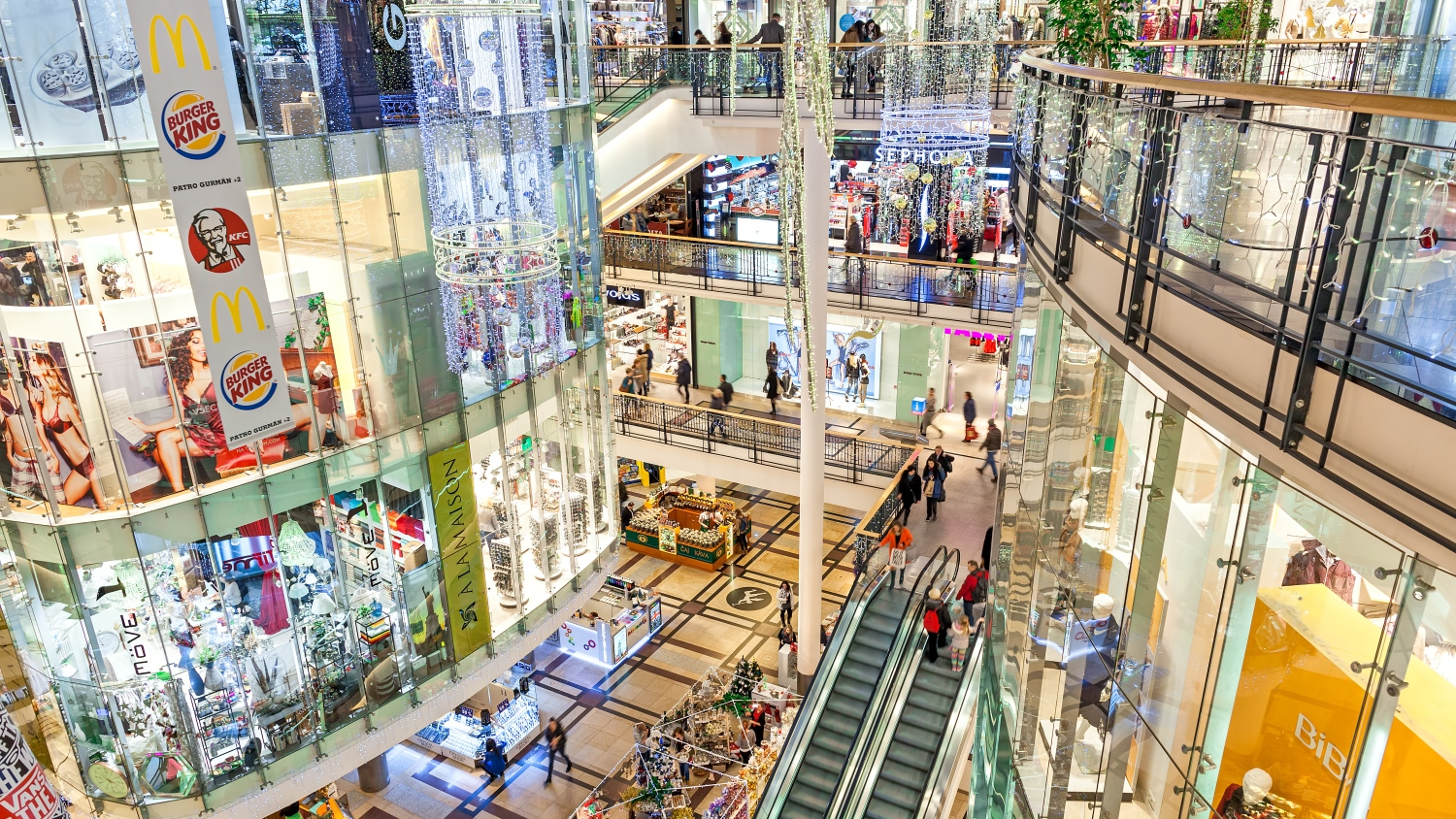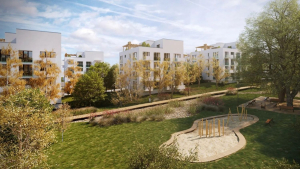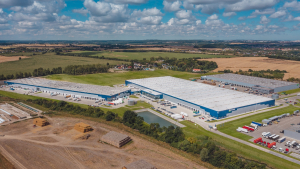
The footfall in Czech regional shopping centres remained almost unchanged despite the previous years of the pandemic and all the lockdowns. The turnover and the average basket increased, and the vacancy is stable. However, due to the 18-week lockdown, the year 2021 fell behind 2019 by about 15%. The biggest concern now comes from the inflation and spending cuts reported by CBRE in its regular Shopping Centre Index analysis together with the results of two surveys on customer behaviour and expected plans of retailers.
Key figures
- Despite the long-lasting lockdown from the beginning of last year, the footfall in regional shopping centres is almost unchanged
- The average basket increased by more than 10% to CZK 260 per visit
- Turnovers improved by about 15%
- The vacancy rate remained stable at 4.4%
- The rent increased by just under 1%
- “Omnichannel” strategies will play a key role in the future
- The biggest concern is rising inflation and spending cuts
The obtained data show that the footfall in regional shopping centres in 2021 remained at similar levels compared to the previous year and the year-round total fell by 27% behind the figures for the pre-covid year of 2019. “Even though the footfall numbers suggest a change in customer behaviour, the trend in turnover shows that it is mainly a different frequency of visits and their planning. This is also confirmed by the year-on-year increase in the average basket by more than 10% to almost CZK 260 per visit to a shopping centre. The more positive news is that last year, during the long-lasting lockdown, there was no such significant drop in footfall, which reached up to -70% in 2020. This is one of the reasons why retailers’ annual turnovers fell by more than 25% the year before last. However, last year, from the total turnover point of view, it brought a recovery of almost 15%,” commented Klára Bejblová, Associate Director – Retail Research for the Czech Republic and CEE region at CBRE. The Czech shopping centres recorded very good results practically immediately after the reopening of the shops. These were motivated by, among other things, delayed consumption and on average they approached the 2019 turnovers. Despite this, the overall result of the turnover was affected by the 18-week lockdown, and so last year fell behind 2019 by about 15%.
Specialised retail fared best in terms of turnover
The sector that saw the lowest drop in turnover (by “just” 6%) compared to 2019, was specialised retail. This result significantly affected the categories of goods not subject to sales restrictions. These were mainly the categories of Optics & Pharmacies (+11%) and Health & Beauty (-5%). These were followed by Electronics with a long-running online platform, which maintained one of the lowest drops in both years. While large-scale operators achieved better results in 2020, in 2021 the decline of only 14% compared to 2019 was driven by smaller specialised electronics stores (like iStores, Xiaomi and ETA). The most significant recovery compared to 2020 was felt by the sectors of Food & Beverage and Services, which together with leisure activities were fundamentally affected by protective measures even after the reopening of operations. Despite a considerable recovery, the results of the whole year in the Fashion, Accessories and Sports sectors in 2021 were below a 20% decline compared to 2019. CBRE has already registered several brands leaving the Czech market too.
Average rents increased by about 1%
The vacancy rate of regional shopping centres remained almost unchanged in the year-on-year comparison at 4.4%. Thanks to ongoing government compensation programmes and the interest of shopping centre owners, there was no significant correction of average rents in 2021, which, on the contrary, increased by less than 1% compared to 2020. Nevertheless, taking into account the indexation, which was 3.2% according to the Czech Statistics Office, it follows that the average level of rent of newly-leased premises decreased by more than 8% year-on-year. The highest growth dynamics of average rents were once again reported by the smallest units up to 100 sqm, by 2.9% (0-50 sqm) and 1.9% (50-100 sqm) year-on-year. Compared to 2020, there was no decrease in average rents for other size categories above 100 sqm, however, the significant decrease caused by repeated restrictions on retail at the end of 2020 affected the rent levels so that the resulting figures in 2021 were still below the level of 2019.
The total retail sales increased in the Covid years. Thanks in part to e-shops
The ever-increasing purchasing power of the population has been largely spent on retail in recent years. Total retail sales increased by 0.1% year-on-year in 2020, while last year by 4.5%. During the lockdowns, however, purchases moved mainly to the online environment. Thanks to this, online increased year-on-year by 27.3% in 2020 and by 15.7% in 2021. This is also illustrated by the current CBRE survey among retailers.
Future threats: inflation, disruption of supply chains and wage growth
The dynamic growth of inflation and the associated reduced purchasing power of customers are perceived by most retailers (92% of respondents) as the most significant threat to sales in the near future. More than 50% of respondents admitted concerns about supply chain disruption, and 36% of the brands were scared of a sharp increase in wage costs and a slower recovery of tourism. A long-term labour shortage remains an equally critical factor for retailers. On the other hand, only 24% of respondents see another wave of Covid-19 as a potential risk (as opposed to the EMEA region, where the vast majority of retailers consider a potential autumn wave of the pandemic to be the biggest risk). However, despite the aforementioned concerns, retailers are bouncing back after two difficult years, and almost three-quarters of respondents even plan to expand and open new branches in the foreseeable future. These are particularly companies from the Sports and Food & Beverage segments. Fashion and Health & Beauty brands are also preparing to expand, but at the same time, they expect to close non-profitable stores.
Customers moved part of their purchases online, but prefer to pick up in person
The second CBRE survey focused on customer behaviour. It shows that people learned to shop online during the pandemic. "People are currently buying food in e-shops 2 times more often than before the pandemic, which means every fourth purchase. For drug and pharmaceutical goods, it is 3 times more often and 2 times more often for clothing and footwear. People are having refreshments from restaurants and cafés delivered up to 3 times more often, but at the same time, they physically visit these businesses at a similar frequency as before the pandemic,” said Pavel Urban, Head of Property Management - Retail and Marketing - Retail at CBRE adding: “If customers buy goods from an online store and can also pick them up at a shop in a nearby shopping centre, three-quarters of people prefer to pick them up in person. In the category of 18 to 25 years of age, it is even 95%. Young people, while spending a lot of their lives in the online world, also desire a personal experience. Other customers will combine picking up a package with other purchases or running errands. Thus, it is imperative to start perceiving both worlds (online and offline) synergically.” According to current turnover figures and traffic, we can say that customers have returned to the centres and that they like to shop in the brick-and-mortar stores.
“As far as current customer concerns go, 86% of the respondents in our survey said they have felt price increases and intend to adapt their behaviour by reducing spending. They want to save most on visits to restaurants and cafés, but also when buying electronics, household equipment, sporting goods, clothing and footwear. They also want to reduce spending on entertainment. On the contrary, they do not want to save on food and currently even on travel. After years of Covid, people have the need to enjoy this year's holiday to the fullest,” concluded Pavel Urban.



